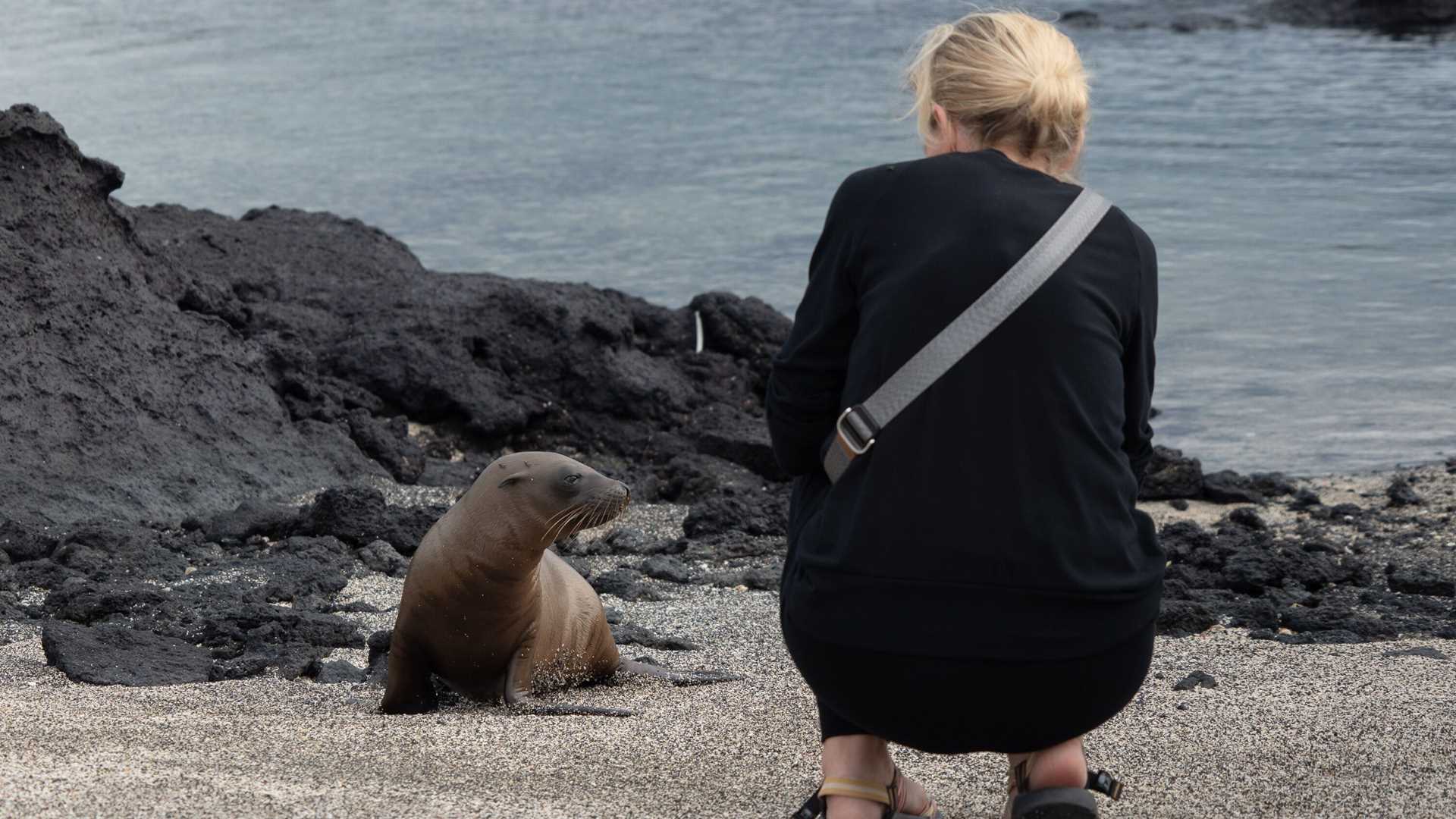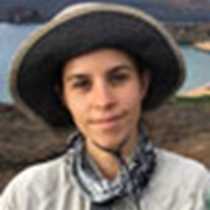Our day began with a mesmerizing exploration of Roca Redonda and Punta Vicente Roca. The morning sun cast a golden glow on the towering cliffs that define this part of Isabela Island. We navigated along the coast, observing the diverse marine life that thrives in these nutrient-rich waters. Notable encounters included playful Galapagos sea lions, elegant flightless cormorants, and sea turtles. Snorkeling enthusiasts were treated to a world beneath the waves and non snorkelers saw just as much from our glass-bottom Zodiac. In the afternoon, our expedition led us to the pristine shores of Fernandina Island. This uninhabited island is a haven for wildlife. The highlights were undoubtedly the iconic Galapagos marine iguanas basking on black lava rocks. As we carefully navigated the island's trails, we marveled at the otherworldly landscapes shaped by ongoing volcanic activity. A sighting of a Galapagos hawk soaring overhead added a touch of wild majesty to our exploration. The sense of isolation and raw nature in these untouched Galapagos corners reminded us of the importance of preserving these ecosystems. Our journey continues tomorrow, promising new wonders in this extraordinary archipelago.
- Daily Expedition Reports
- 06 Dec 2023
Isabela and Fernandina, 12/6/2023, National Geographic Islander II
- Aboard the National Geographic Islander II
- Galápagos
Anahí Concari, Naturalist/Certified Photo Instructor
Anahí grew up in a small house by the beach in the Galápagos Islands. Along with her best friend, she used to wander during the days around mangrove trees, becoming a different animal every day. She used to camp on solitary beaches, snorkel with shar...
Read MoreShare Report
Galápagos Escape: An 8-Day Voyage
VIEW ITINERARYRelated Reports
5/7/2025
Read
National Geographic Islander II
Isabela and Fernandina Islands
Our day began with a unique moment, crossing the equator in the early morning hours as we sailed toward Punta Vicente Roca on the northwestern tip of Isabela Island. A traditional celebration marked the occasion, with cheers from the deck and a chance to reflect on our passage over one of Earth’s most iconic geographic lines. After breakfast, we boarded Zodiacs to explore the coastal cliffs and caves of Punta Vicente Roca. The towering remnants of a submerged volcanic caldera create a dramatic backdrop, rich in both geology and wildlife. Along the rugged shoreline, we observed flightless cormorants, Nazca and blue-footed boobies, and a number of Galápagos fur seals resting in shaded crevices. Following a scenic navigation across the Bolívar Channel, we arrived at Espinosa Point on Fernandina Island, the youngest and most volcanically active island in the Galápagos./p> In the water, we were surrounded by an abundance of marine life, including sea turtles and agile marine iguanas feeding underwater. After drying off, we set out on a walk across the striking lava landscape. The marine iguana colonies were particularly impressive today, with hundreds gathered together to absorb the warmth of the afternoon sun.
5/6/2025
Read
National Geographic Islander II
North Seymour and Rabida Islands
At 6:30 in the morning, some guests joined us for an expedition on North Seymour Island, which is slowly losing its green color due to the beginning of the dry season. It is a perfect time of year to see blue-footed booby couples starting to reproduce with the typical courtship displays and a good number of male frigatebirds with their red gular sack inflated. We encountered a good number of healthy land iguanas since they still have a lot of food, thanks to the previous wet season. While navigating to Rabida Island, bottlenose dolphins escorted National Geographic Islander II for at least 45 minutes, and guests had an excellent time watching them. In the afternoon, we snorkeled from the beach with colorful fish and young, playful sea lions who put on a great show. At the end of the day some guests took a walk on the red colored sand and watched American flamingos behind the dune at a saltwater lagoon. Others went kayaking along the coast full of land and sea birds.







